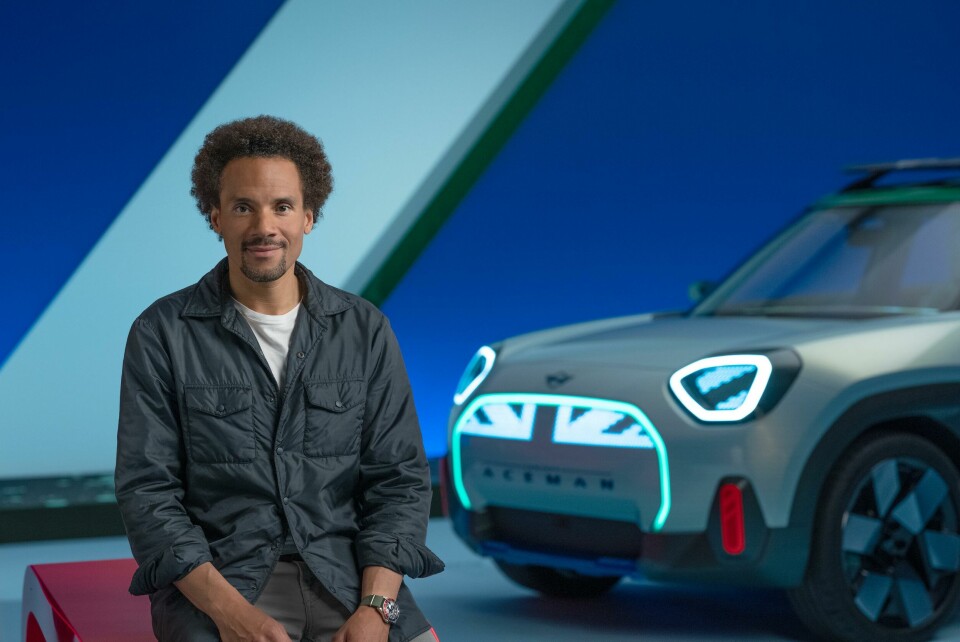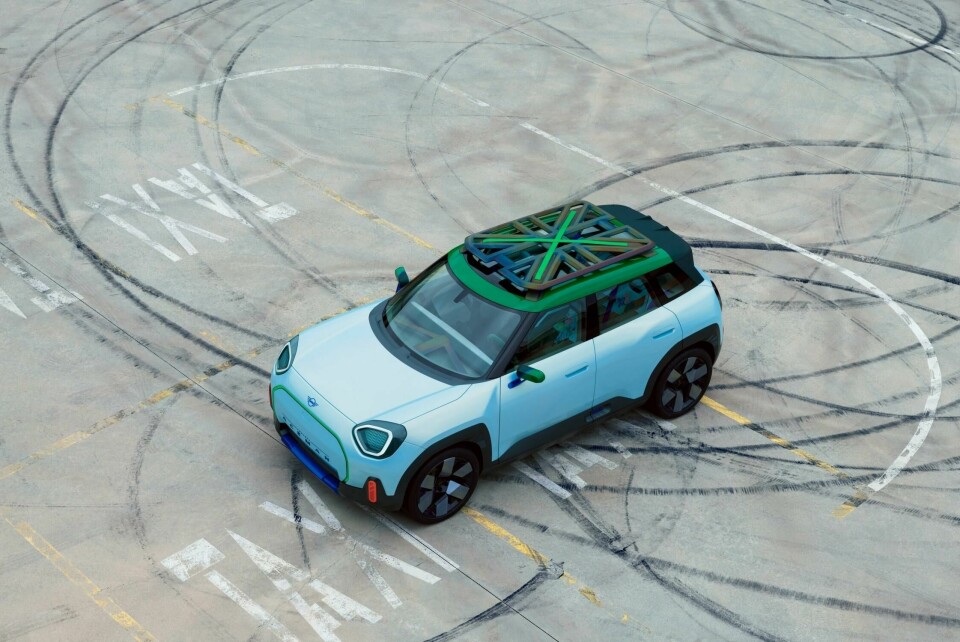
Mini’s design boss discusses new minimal aesthetic
Car Design News caught up with Oliver Heilmer, head of design at Mini, to discuss the brand’s muscly new Aceman concept and the challenge of bringing the Mini spirit to a crossover
In July, Mini took the wraps off its latest concept car, the Aceman. More than just for show, this stocky little five-door hatch is a preview of what is soon to come as it launches a fresh generation of plug-in models.
With a new electric powertrain, a new look and a new segment to play in, the Aceman will be the brand’s first crossover, bridging the gap between the Cooper and Countryman. Mini says it is also a signal of the brand’s evolution, led by a new design language dubbed “Charismatic Simplicity.” This combines minimalist design ideas inside and out with a greater emphasis on lighting.

At 4.05m long, 1.99m wide and 1.59m tall the proportions are typically Mini, but it is clear that this is a bulkier cousin of the Cooper. Heavily flared wheel arches, chunky new wheels and a more angular, geometric network of creases all create a muscular look. This is bolstered by contrasting body surrounds, giving the appearance of gaping wheel arches that could be found on an off-roader. It is not quite the cute Mini aesthetic we have come to know and is altogether more grown up. (Ironically, Mini is targeting a younger tech-savvy audience, but more on that later.)
A significant change to the design language can be seen with the Aceman’s front end, which carries a much flatter and more upright face than before. The oval headlights are also replaced by a new pentagon shape, while a contrasting LED light bar loops around the upper and lower mask, outlining the space that might otherwise be taken up by a conventional grille. Like most EVs, the front end is almost entirely smooth save for a small intake above the front splitter and a large ‘Aceman’ badge.
“In car design, making something smaller than before seems impossible today”
From the rear the silhouette is somehow reminiscent of the Mini Coupe, with wide hips tapering significantly from the shoulder line up into the roof. A substantial roof rack is a reminder that the Aceman is more about utility than previous models. Let’s remember that this is a concept of course, but as head of Mini design Oliver Heilmer explains, a production variant of the Aceman is not far away. It all started when the team saw a gap in the portfolio for a slightly larger family-oriented car, but also something that is a little more out there, he tells CDN.
And so to the elephant in the room: this is a Mini crossover. Ensuring that a vehicle in this segment can still ”feel” like a Mini certainly presented some headaches for the design team. “Initially, it was an almost daily fight. It was tough,” Heilmer concedes. “In the car design industry, making something smaller than before seems impossible today. Even if you keep the car the same size when moving from one generation to the next, that is a miracle. We said from the start that we would not allow the Aceman to become larger than the first Countryman, and this is something we achieved.”
In this case, using an electric powertrain certainly helped matters, allowing the wheels to be pushed further to the corners – typical of the original Mini’s go-kart looks – and maximising cabin space. “An electrified architecture gave us the chance to push the boundaries far more than we have previously been able to,” says Heilmer. “We have the tools and tricks to make something appear small, but when you look at the ecosystem of electrified cars across the industry, you can see that many of them are growing dramatically. With our cars, we are not doing that, which is something I’m really happy about.”
Those short overhangs help to boost cabin space for both passengers – seating up to five – and leave plenty of room for luggage. Storage space aside, the interior is clean and uncluttered with just three key elements: the steering wheel, the central display and the toggle bar, which controls the parking brake and drive mode. This was by design, a nod back to the original Mini of the 1960s which was naturally minimalistic owing to the limited technology that was available.
“We understood that there’s a gap to create a new family member: the Aceman”
In the Aceman, the latest technology is still there but the HMI is pared back for a more engaged driving experience – or MINImalism, as the brand’s marketing gurus put it. “We took the chance to create a more Mini-typical interior that offers better interaction and clarity,” says Heilmer. “That approach to the interior carries over not just for the Aceman but also the Cooper and the Countryman.”
It is not the first time Mini has dabbled with roomier laid-back interiors. In 2020 it unveiled the vision Urbanaut, which began not with a sketch but by creating a floor plan of sofas, chairs, coffee tables and other home comforts that might be found in a living room. “It is designed to make you feel like being at home,” Heilmer said at the time.
The team may not have gone to such lengths with the Aceman, but they have played around with light, materials and colour. It is certainly a vibrant space, dominated by pops of colour and mixed textiles. There is no chrome and no leather for a start, instead utilising materials like recycled polyster where possible and velvet velour on the steering wheel. A khaki green base on the major surfaces is paired with blue-purple contrasting patterns throughout, while buttons (yes, buttons!) are hidden behind backlit, textile-covered surfaces.
The Aceman’s first public outing took place at the 2022 Gamescom conference in August, a conference that brings together video game enthusiasts and developers – perhaps a nod toward the new demographic of buyers being targeted. There is no official word when a production version will launch, but Heilmer is excited to see how the new model eventually performs. Compared to the other members of the Mini portfolio, the Aceman is “more edgy”, he explains and “a little more extroverted and robust.”
“The Cooper is about being not too loud, and is more evolution than revolution,” he adds. “Then there is the Countryman, which is more of a family car and will be in its third generation. We gathered a lot of information from customers and we understood that there’s a gap to create a new family member: the Aceman.
















